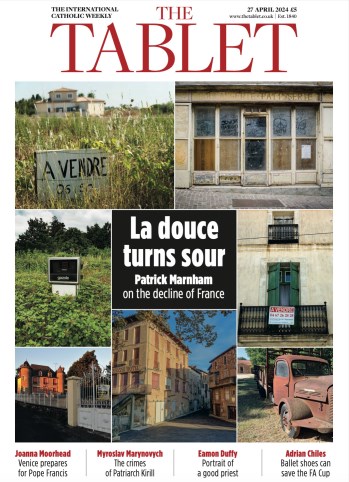My very first experience of wine was altar wine: not the wine consecrated during the Mass – this was long before “Communion under both kinds” – but altar wine surreptitiously slurped in the sacristy before Mass. The wine was sweet and heavy and, though nectar to our untutored tastes, it created the false impression that all wine was sweet.
Realising later – though not much later – that nothing could be further from the truth was as pleasant a discovery as the illegal tipple was delicious.
The muscat family of grapes alone, for instance, from which the altar wine was made, has over 200 varieties, producing not only rich, sweet, golden wines but also pale, bone-dry whites. In Alsace, for instance, most muscat-based wines are light and dry, with a fruity, musky character and an intensely aromatic bouquet; whereas Muscat de Beaumes de Venise is one of the best-known naturally sweet wines, drunk with pudding and dessert.
Dessert wines are not as popular as they once were, but Christmas usually sees a spike in sales to accompany the Christmas pudding. But, though most of us still think of dessert wine as heavy and sweet, there’s a wide variety, ranging through lightly sweet and sparkling to golden, rich whites, as well as honeyed reds. Sparkling demi-sec or off-dry dessert wines, such as Vouvray, or very sweet, ones, moelleux, such as Asti Spumante, are perfect for delicate, summer, fruit-based desserts. The luscious, thick, sometimes syrupy sweet whites are as obviously made for Christmas pudding as eggs are made for bacon.
The method of making these rich, sweet wines varies: some are produced by leaving grapes on the vine longer than usual, resulting in higher residual sugar levels: German Spätlese, for instance, is produced in this way. Others are made from grapes infected with what’s known as “Noble Rot”, a spore, Botrytis cinerea, which produces very unpleasant-looking grapes, but imparts huge, lingering flavours of honey and ginger. Sauternes, Barsac and Monbazillac, the most popular French pudding wines, all from around Bordeaux, are made using this method.
The most famous dessert wine – and one of the greatest achievements of viniculture of all time – is, of course, the legendary Château d’Yquem. The only Sauternes included in the 1855 Bordeaux classification, it has been found to remain in perfect condition for over 100 years. Such is the stellar reputation of d’Yquem that, in poor years, the whole crop is sold off anonymously, so as not to tarnish its name. This happened nine times in the last century; so far in the present century, only the 2012 crop went to market without its name.
You don’t usually find pudding wines on the lower shelves of supermarkets: Waitrose’s De Bortoli Noble One Botrytis Semillon 2011, from New South Wales, with its finely-balanced peach and vanilla nose and surprisingly moderate strength of only 10 per cent volume, is a pricey £19.99 for 37.5cls. The bargain buy this Christmas, without any sacrifice of quality or strength, is undoubtedly the Co-op’s half bottle of Chateau Roumieu Sauternes, also 2011, usually £12.99, but reduced to £7.99 from 9 December until 5 January 2016 inclusive.
10 December 2015, The Tablet
Pudding club
La douce turns sour
 Loading ...
Loading ...
Get Instant Access
Subscribe to The Tablet for just £7.99
Subscribe today to take advantage of our introductory offers and enjoy 30 days' access for just £7.99





What do you think?
You can post as a subscriber user...
User Comments (0)